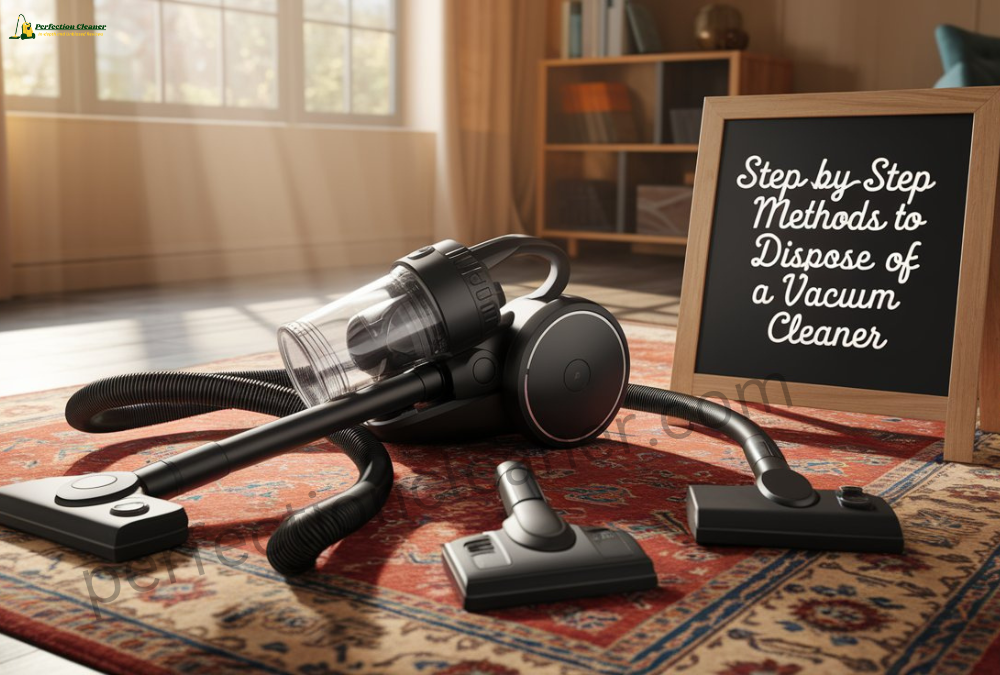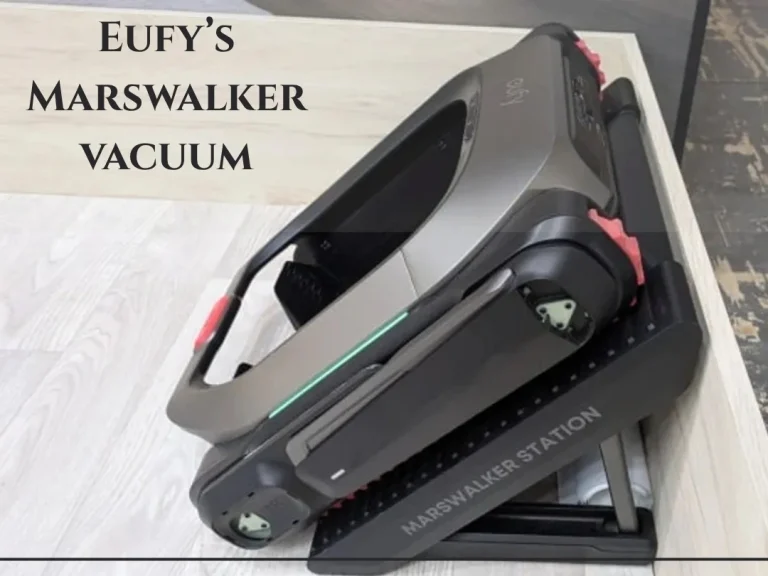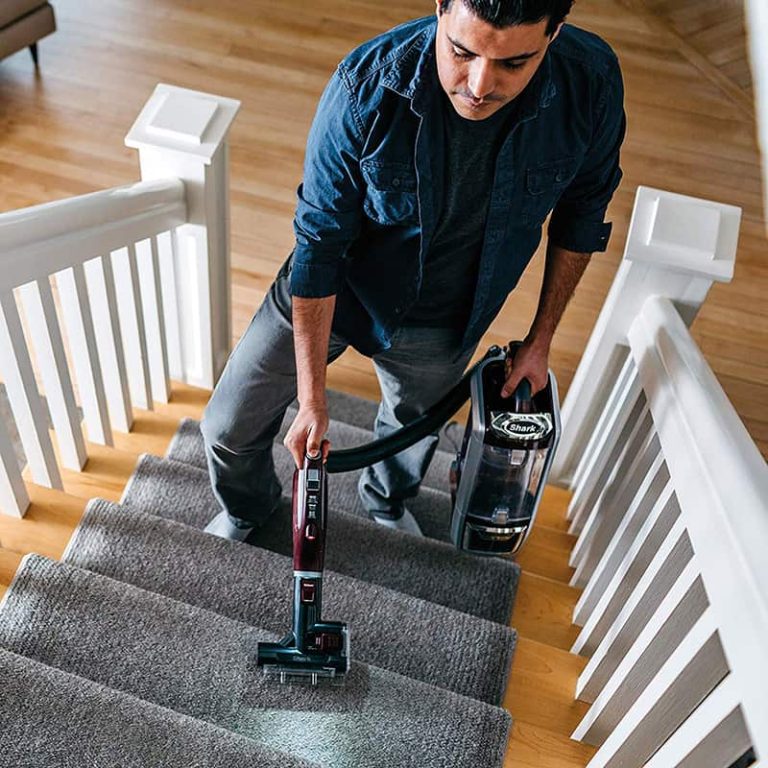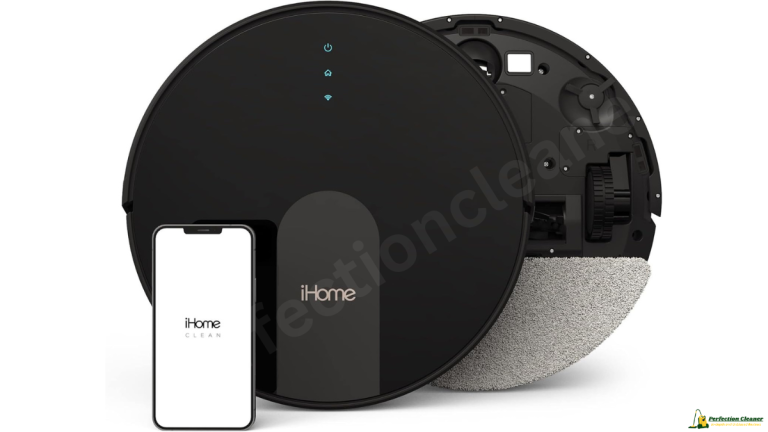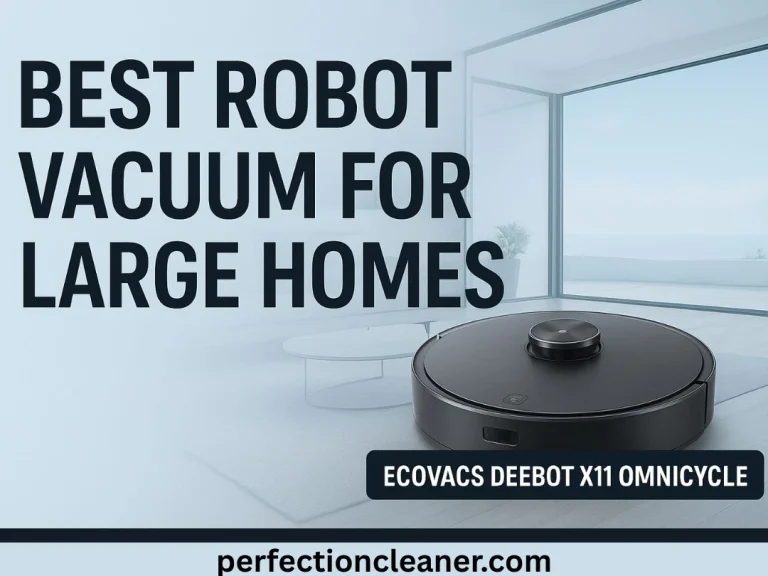How to Dispose of a Vacuum Cleaner: Eco-Friendly Methods & Safety Tips
When your trusty vacuum cleaner reaches the end of its life, tossing it in the trash isn’t just irresponsible—it’s often illegal. Vacuum cleaners contain materials like plastic, metal, and electronics that can harm the environment if improperly discarded. This guide walks you through safe, eco-friendly ways to dispose of a vacuum cleaner, ensuring compliance with local laws while maximizing sustainability.
Why Proper Vacuum Cleaner Disposal Matters
Vacuum cleaners fall under electronic waste (e-waste) in many regions due to their motors, wiring, and (in some models) lithium-ion batteries. E-waste often contains toxic substances like lead and mercury, which can leach into soil and water if dumped in landfills. Recycling or repurposing your vacuum reduces pollution, conserves resources, and supports a circular economy.

Step-by-Step Methods to Dispose of a Vacuum Cleaner
1. Recycle Through E-Waste Programs
Most vacuums are recyclable. Here’s how to do it right:
- Check Local E-Waste Facilities: Search for “[Your City] + e-waste recycling center” to find certified facilities. Many municipalities host free drop-off events.
- Retailer Take-Back Programs: Stores like Best Buy or Home Depot often accept small appliances for recycling. Call ahead to confirm.
- Manufacturer Recycling: Brands like Dyson and Shark offer mail-in or drop-off recycling programs. Visit their websites for details.
Pro Tip: Remove the dustbin or bag and clean debris before recycling to avoid contamination.
2. Donate to Extend Its Lifespan
If your vacuum still works, donate it to:
- Thrift Stores: Goodwill, Salvation Army, or local charities.
- Community Centers: Schools, shelters, or repair workshops may need functional appliances.
- Online Platforms: Post on Freecycle, Buy Nothing groups, or Facebook Marketplace.
3. Sell for Cash or Trade-In
Turn your old vacuum into money:
- Resale Platforms: eBay, Craigslist, or OfferUp are ideal for lightly used models.
- Pawn Shops: Get quick cash if the vacuum is in good condition.
- Retailer Trade-Ins: Some retailers offer discounts on new purchases when you trade in old appliances.
4. Repurpose Parts Creatively
Get crafty with vacuum components:
- Attachments: Convert nozzles into garden tools or pet toy dispensers.
- Motor: DIY enthusiasts can repurpose motors for small projects.
- Cord: Use the durable cord for home repairs or crafts.
5. Municipal Bulk Waste Pickup
If recycling isn’t an option, contact your local waste management service. Many cities collect large appliances for a fee. Never leave vacuums on curbsides illegally.
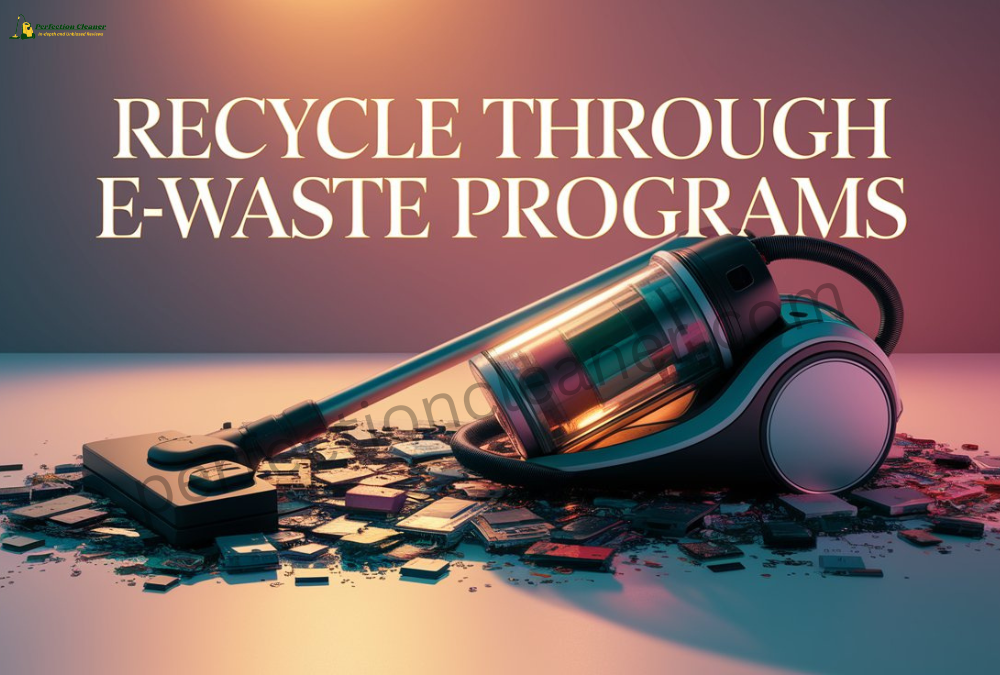
Safety Precautions When Disposing of a Vacuum
- Remove Lithium Batteries: If your vacuum has a detachable battery, recycle it separately at a battery drop-off point.
- Empty Dust Containers: Wear gloves and a mask to avoid inhaling allergens or debris.
- Secure Loose Parts: Prevent injuries by taping sharp edges or disassembling large components.
Why Certification Matters
Certified e-waste recyclers like R2 and e-Stewards follow strict guidelines to prevent toxic materials from entering landfills. For example, lead in vacuum motors can contaminate groundwater if processed improperly.
1. How to Find a Center
- Use tools like Earth911’s Recycling Locator or the EPA’s Electronics Donation and Recycling Page.
- Example: In California, CalRecycle lists over 1,000 certified e-waste drop-off points.
Preparation Steps
- Disassemble the vacuum: Remove the dustbin, filters, and battery.
- Clean components: Residual dust can hinder recycling efficiency.
- Secure loose wires: Tape cords to prevent machinery jams.
Cost Considerations
- Some centers charge 5–5–20 per item, while municipalities often offer free annual e-waste events.
2. Donating to Extend Lifespan
Where to Donate
- Thrift Stores: Goodwill requires appliances to be in working order.
- Repair Cafés: These volunteer-run spaces fix broken vacuums for low-income families.
- Schools/Theaters: Drama departments use vacuums for set cleanup.
Tax Benefits
- Document donations with receipts. A functional 150vacuumcouldyielda150vacuumcouldyielda40 tax deduction.
Success Story
- A 2019 study found that 60% of donated vacuums in Oregon were reused, diverting 12 tons of waste annually.
3. Selling for Cash
Platform Comparisons
- eBay: Ideal for high-end models (e.g., 200Dysonvacuumssellfor200Dysonvacuumssellfor80–$120 used).
- Facebook Marketplace: Local sales avoid shipping fees; mention “pet-friendly” or “HEPA filter” for SEO.
- Amazon Trade-In: Get a 20% discount on Shark vacuums by trading in old models.
Pricing Strategies
- Research competitors: A 5-year-old Bissell priced at 30% of its original value sells faster.
- Highlight accessories: Include attachments, spare bags, or warranties.
Negotiation Tips
- Bundle with other appliances (e.g., “Vacuum + Steam Mop: $100”).
4. Repurposing Parts
DIY Ideas
- Motor Projects: Convert motors into desk fans or aquarium pumps.
- Cord Reuse: Turn cords into garage hooks or garden trellises.
- Nozzle Hacks: Use crevice tools to unclog sinks or clean keyboards.
Safety Tips
- Wear insulated gloves when handling motors.
- Avoid repurposing lithium-ion batteries—they require specialized recycling.
5. Global E-Waste Laws
United States
- California: Mandates free e-waste recycling via the Electronic Waste Recycling Act.
- New York: Bans landfill disposal; fines up to $100 per violation.
European Union
- WEEE Directive: Requires retailers to take back old appliances at no cost.
Asia-Pacific
- Japan: The Home Appliance Recycling Law charges 20–20–30 for vacuum disposal.
- Australia: Council clean-up events offer free e-waste drop-offs.
6. Environmental Impact
By the Numbers
- Recycling 1 million vacuums recovers:
- 15,000 tons of steel (enough for 2,500 cars).
- 3,000 tons of plastic (equivalent to 300 million water bottles).
Carbon Footprint
- Manufacturing a new vacuum emits 40 kg of CO2. Recycling cuts this by 75%.

Final Thoughts
Disposing of a vacuum cleaner responsibly protects the environment and keeps hazardous materials out of ecosystems. Whether you recycle, donate, sell, or repurpose, each method contributes to a greener planet. Always prioritize certified e-waste recyclers and share this knowledge to inspire eco-conscious choices in your community!
FAQs About Vacuum Cleaner Disposal
Q: Can I throw my vacuum in the regular trash?
A: In most areas, no. E-waste bans prohibit disposing of appliances with electronics in landfills. Check local laws to avoid fines.
Q: Are vacuum bags recyclable?
A: Paper bags can go in compost or recycling. Synthetic bags should be trashed after emptying.
Q: How do I dispose of a smart vacuum with Wi-Fi?
A: Factory-reset the device to erase data, then recycle through an e-waste program.
Q: How do I dispose of a vacuum with a moldy filter?
A: Seal the filter in a bag, label it “biohazard,” and contact a hazardous waste facility.
Q: Can I recycle a vacuum with a broken motor?
A: Yes! Scrap metal recyclers often pay 0.50–0.50–1 per pound for motors.
Find More about Vacuum Cleaner:
Miele Vacuum Hose Replacement, What is a perfect vacuum hydraulics, How should I vacuum my car AC system, which is better: duct cleaning with vacuum or pressure, Which Miele Vacuum to Buy?, Shark vs. Dyson Vacuums: Which Vacuum Brand is Better?, HomePro Handheld Vacuum
